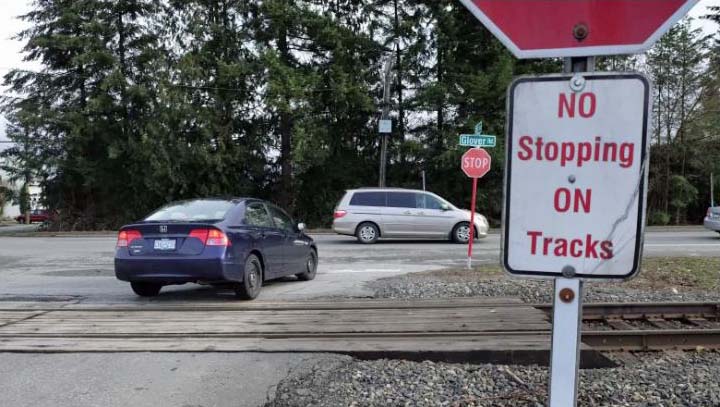
Langley British Columbia - A woman who was seriously injured when her car was struck by a train at a poorly maintained crossing in Langley
has been awarded millions in damages from Canadian Pacific Railway (CP).
Jane Huang's spinal cord was partially severed when her car was struck by a freight train after she drove through the Smith Crescent crossing on
8 May 2014.
At the time of the crash, the crossing was overgrown with blackberries, and any drivers approaching the tracks and looking south for oncoming trains would be
greeted by a "wall of bushes," B.C. Supreme Court Justice Margot Fleming wrote in a judgment Tuesday.
The judge said CP should have been regularly monitoring the crossing every spring and summer, when blackberries flourish in the area.
"I am satisfied that but for the CP's breach of the standard of care, the collision, and therefore Ms. Huang's injuries and losses, would not have
occurred," Fleming said.
The judge held Huang 40 percent liable for failing to stop and look for trains, but said her response "resulted from an unreasonable but honestly held
belief the railway tracks had been abandoned."
CP, on the other hand, bears the brunt of the blame for being "indifferent in its approach to maintaining adequate sight lines despite being fully aware
of the grave risk of collisions," Fleming wrote.
The rail company cut back the bushes after the crash.
Huang's civil suit also named as defendants the Canadian National Railway (CN), which operated the train, as well as the engineer and conductor on board that
day, but the judge found they were not liable for what happened.
The decision awards Huang at least $2.4 million in damages, but that total doesn't include an estimate for the cost of home care support for 21 hours a week
for the rest of her life.
Huang, who has a graduate degree in engineering and an MBA, has told CBC that she remembers very little of the crash.
She only recalls waking up paralyzed in the hospital, two weeks later.
Since then, she has regained the ability to walk with some help from a walker, but a traumatic brain injury has left her unable to work, and she suffers from
depression, according to the court judgment.
A History of Safety Concerns
On the day of the crash, Huang was driving home from work.
When she entered the railway crossing, there were no bells, lights, or gates to warn of oncoming trains, instead, the tracks were marked with a stop sign, a
white "X", and a caution sign reading "No Stopping on Tracks."
As CBC has previously reported, Transport Canada officials have repeatedly identified safety problems along the rail corridor over the last quarter century,
including at the crossing where Huang was injured.
In 2016, CBC News identified the Smith Crescent rail crossing as one of the 25 most dangerous in Canada based on crash records collected by the Transportation
Safety Board.
So far this century, the crossing site has seen at least five serious train accidents, including one that killed a pedestrian.
Bethany Lindsay.
provisions in Section 29 of the Canadian
Copyright Modernization Act.


